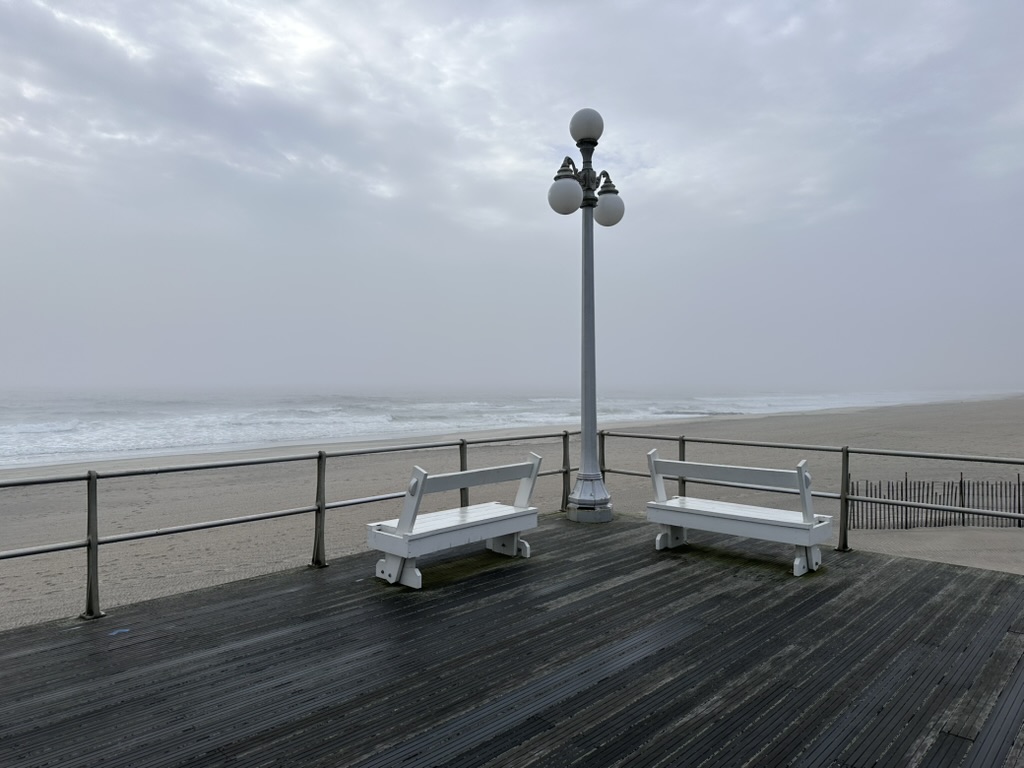
Had the boardwalk almost to myself today, with just one or two joggers braving the rain. Under the gazebo things were nice and dry for my exciting day of practice.
Exciting? Today I was going to explore conforming more closely to Master Chen’s form, the taller stance, and also explore his approach to stepping. I just yesterday spotted this in Chen’s “Brain Aerobics of Tai Chi Chuan”, in the chapter “The Three Nails”:
[In doing the form], when the body weight drops on to the arch-heel we exhale, and the awareness feeling subsides as the Qi decreases. When the arch-ball is pressing, we inhale; then the awareness is rising and Qi is surging.
So for Master Chen, forget the empty step! Which I knew anyway. I had gotten the idea from Professor Cheng’s students who followed his form faithfully, and Master Chen even in his most recent Zoom classes has explicitly rejected the empty step as unnatural.
From Empty to Rolling Yin-Yang Step
But now I not only knew Master Chen eschewed the empty step, I actually had an explicit alternative (and kudos to folks who asked if I was planting my heel first):
- yin: exhale and take our mind off as the weight settles gently onto the heel; then
- yang: inhale and wake up as our weight rolls onto the inner ball of the foot, completing the heel-ball “suction cup” arch.
Suction cup? One of Master Chen’s innovations is “The Three Nails”, which nails we imagine piercing the ground from our inner heel, inner ball of foot, and big toe.
These three nails also form two “arches”, from toe nail to ball nail and from ball to heel nail. Importantly, these arches are not static like real arches: we can scrunch either by contracting muscles in the foot, and grip the ground. As with a suction cup!
Now the smaller step makes even more sense, and also the empty step gets a new definition: the heel comes down gently, but with commitment; we cannot take it back, but neither are we falling heavily onto the heel. We are just starting soft before rolling onto the ball to generate power.
Closely watch Master Chen doing the form. The clip starts just as he is about to discuss the balance required to step slowly and softly. On any advancing or rare retreating step, the foot moves out to its destination as slowly as ever, at that “mighty river” speed, until it reaches its destination and continues down into the ground, gently and mindfully. Could he retreat at the last second? I do not think so. Is the step falling uncontrolled? No.
With this change we greatly reduce the challenges to our balance and our leg strength. Quite a change! But for Master Chen, the first priority is relaxation, so we can focus on “full commitment of the awareness brain to direct the movement of Qi.”
And strength and balance still build, just more slowly.
If we can step like Master Chen, we achieve all the objectives of the extreme Empty Step: balance, strength, and flow.
My take on this adjustment is that we want our exercise to be precise, so we must “listen” to the proprioceptive system, which tells us how we are executing. Struggling artificially with balance and strength overwhelms the gentle proprioceptive signal. Yes, the struggle builds balance and strength more quickly, but at the cost of stress and lost mindfulness.
How did it go?
Muscle memory dies hard. 🙂 But I managed more than a few rolling steps, and of course they are easier than pure empty steps. Let us check back after a couple weeks of practice and see if I make any breakthrough. Meanwhile…
…in class today, one of our ballerinas observed that gymnasts on a balance beam used the foot scrunch to secure themselves on the beam, so this may be a keeper.
In fact, after a bit of practice just walking mindfully with gentle heel placement followed by an eager toe grip, I walked naturally back to my starting position and realized my walking had already changed! When a change takes hold that quickly, it means we have found something.
The master speaks
Here is Master Chen himself describing proper tai chi stepping in a 2012 workshop.
Towards the end he also discusses breathing, emphasizing that, if we just let go, we will naturally inhale when “waking up” and exhale when “falling asleep”. As one meditation guide said, never interfere with the breath. (Others say the opposite. :))
And for those just curious about my teacher’s personna, this video captures it well: warm, witty, intelligent, concise, playful, pragmatic, unpretentious, and authoritative.